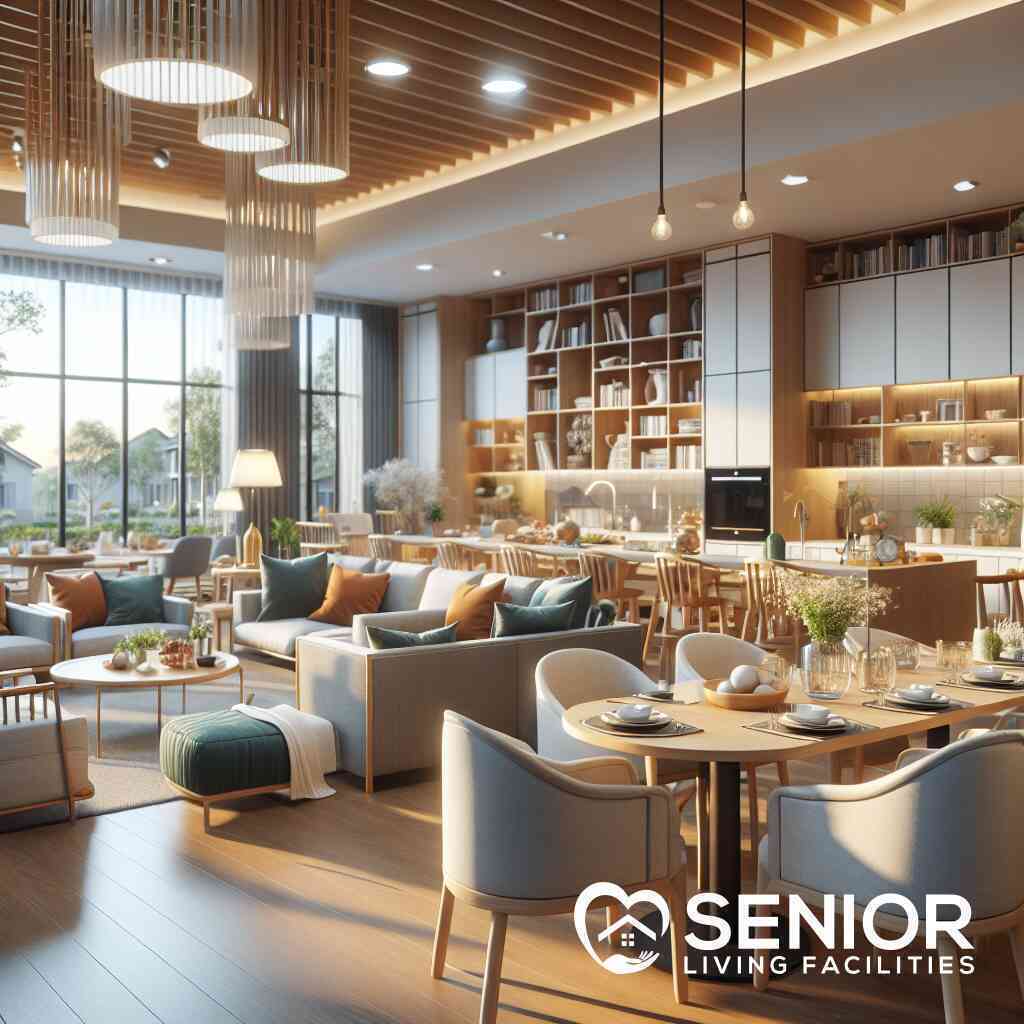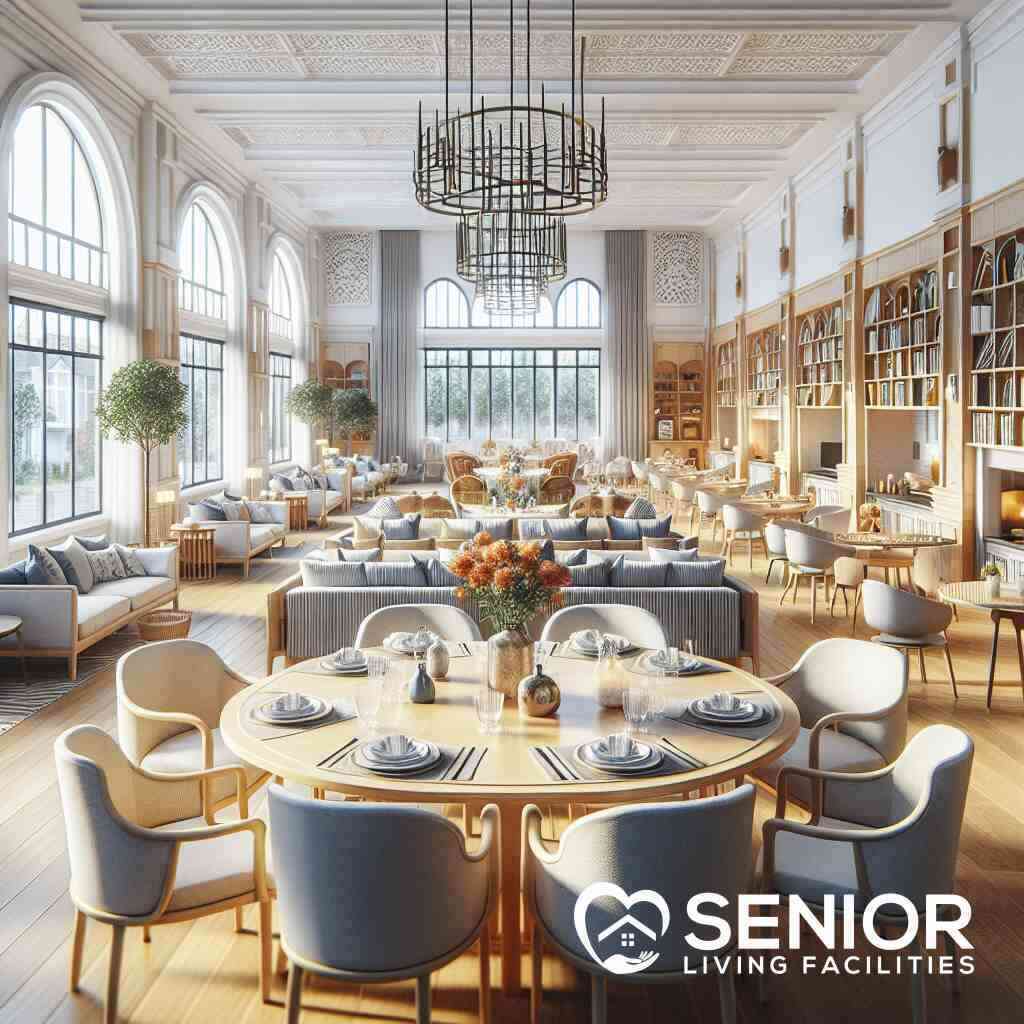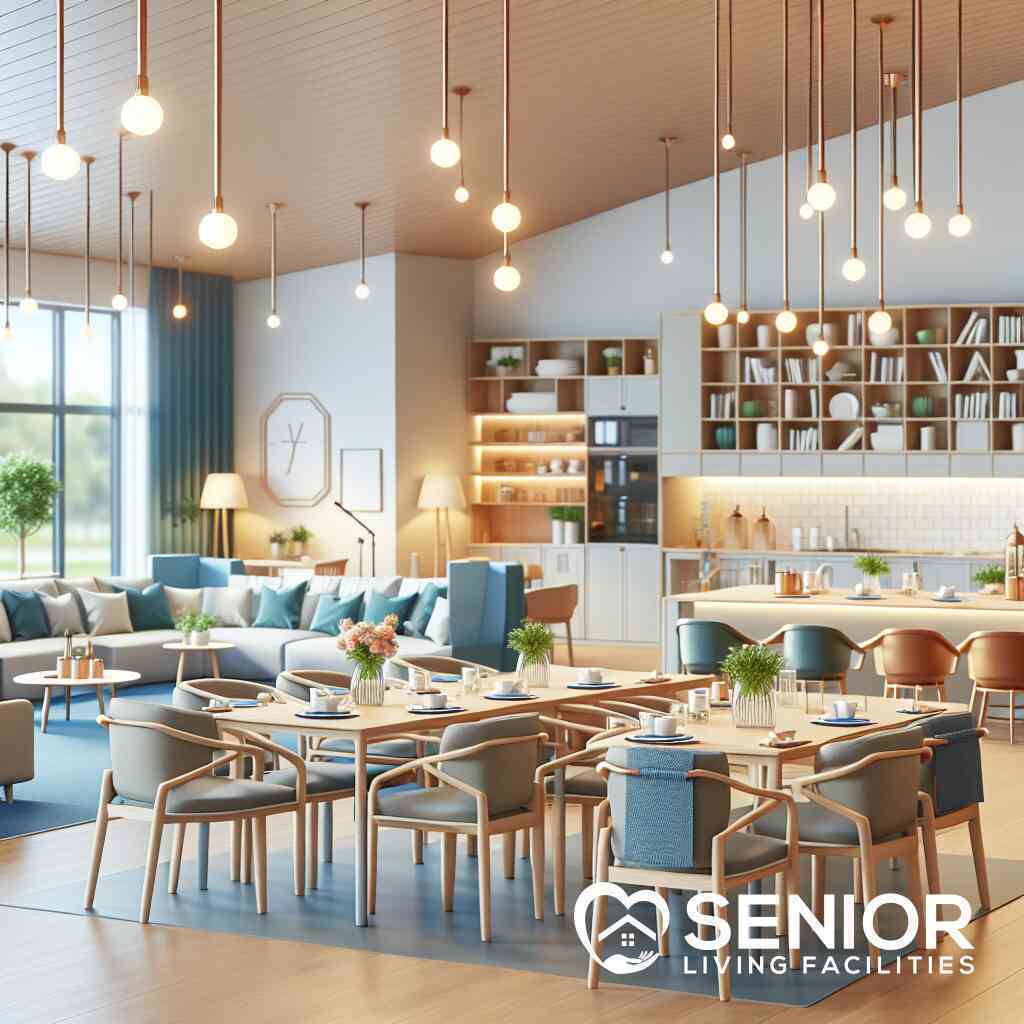
What Is the Definition of Co-Living in Senior Spaces?
September 27, 2024
Introduction to Co-Living in Senior Spaces
Defining Co-Living for Seniors
Co-living in senior spaces refers to an arrangement where older adults share an environment designed to promote community and collective experiences while maintaining individual private spaces. This model fosters social interaction, shared responsibilities, and mutual support, all tailored to the specific needs and lifestyles of seniors. Explore more about shared senior living. In these communal settings, residents enjoy the benefit of shared facilities like kitchens, living rooms, and recreational areas, enabling a lifestyle that balances privacy with social engagement.
Evolution of Senior Living Options
The landscape of senior living has dramatically evolved over the years, transitioning from traditional retirement homes to more dynamic and socially engaging environments. The introduction of co-living spaces is a response to the growing demand for housing models that not only cater to the health and care needs of the elderly but also foster a sense of community and interpersonal connections. These living arrangements are designed to accommodate the modern senior who values independence yet appreciates the advantages of a supportive community network.
Key Differences Between Traditional and Co-Living Senior Spaces
Traditional senior living options typically focus on providing care and residential amenities in a more segmented, individual-focused manner. Residents may live in separate apartments or rooms with limited opportunities for interaction. In contrast, co-living spaces are specifically designed to enhance communal living where sharing and interaction are encouraged. The characteristics of such senior co-living spaces include more open, shared areas that promote gathering and collective activities, making social interaction an integral part of daily life. This can lead to a richer, more fulfilling living experience marked by a stronger sense of community and belonging.
Exploring the Benefits of Co-Living for Seniors
Enhanced Social Interaction
One of the significant attractions of co-living for seniors is the enhanced level of social interaction it naturally fosters. In these communal living settings, seniors find themselves part of a vibrant community where social events, shared meals, and group activities are routine. This constant social stimulation not only combats loneliness-a common issue among the elderly-but also stimulates mental health and emotional well-being. As residents engage with peers in similar life stages, they develop supportive networks that can transform their daily living experience from mere survival to a dynamic and interactive lifestyle.
Economic and Financial Advantages
Co-living also presents notable economic benefits. By sharing resources such as utilities, maintenance costs, and even groceries, residents can significantly reduce their living expenses. An affordable senior co-living space is especially beneficial for those on fixed incomes, providing a financially viable alternative to traditional senior housing. Moreover, these shared costs do not mean sacrificing quality; many co-living environments offer modern amenities and are situated in desirable locations, giving residents a lifestyle that is both affordable and high in quality.
Shared Responsibilities in Daily Living
Living in a co-living arrangement means sharing daily responsibilities, which can ease the individual burden on seniors. From housekeeping to meal preparation, tasks are divided among residents according to ability, making daily chores more manageable and less physically demanding. This collaborative approach not only fosters a sense of community and mutual aid but also allows residents to maintain a productive lifestyle, contributing to the community in meaningful ways. This can enhance self-esteem and provide a sense of purpose, which is crucial for mental and emotional health during senior years.
Psychological and Emotional Perks
The communal nature of co-living can significantly boost psychological and emotional health. Residents benefit from regular social interactions that help keep loneliness and depression at bay. Living in a supportive community where help and companionship are always at hand can also lower stress levels and contribute to a more positive outlook on life. Moreover, these environments often promote a sense of belonging and identity as seniors connect with others who share similar interests and life experiences. This sense of community can be incredibly comforting and can have a profound impact on overall mental health.
In summary, co-living for seniors is not just about sharing space; it’s about creating communities that enhance the quality of life through social interaction, economic benefits, shared responsibilities, and psychological support. Discover options for shared housing for seniors. Choosing a co-living space can profoundly impact one’s enjoyment and engagement in later life.
Types of Co-Living Models for Seniors
Co-living for seniors is not a one-size-fits-all solution. It encompasses various models, each with unique features, advantages, and community types, reflecting the diverse preferences and needs of older adults. From co-housing to intergenerational spaces, these models offer more than just a place to live; they offer a chance to connect, grow, and experience life together with peers.
Senior Co-Housing Options
Senior co-housing is a model in which individuals or couples have private residences but share common facilities such as kitchens, dining rooms, and recreational spaces. Learn more about senior co-housing options. This model emphasizes a participatory process designed and managed by the residents themselves, who are committed to living as a community. The physical design encourages both social contact and individual space and typically includes environmentally sustainable practices.
Communal Senior Apartments
Communal senior apartments provide a more urban living option for seniors who wish to retain an independent lifestyle while having access to shared spaces and community events. These apartments are often located in communal living for seniors in California, catering to those who prefer city living and the convenience of nearby amenities. Residents can enjoy common areas like libraries, fitness centers, and lounges where they can socialize and engage in community activities.
Intergenerational Co-Living Spaces
Intergenerational co-living spaces bring together people of different ages to live under one roof. This model fosters a dynamic environment where seniors can interact with younger generations, sharing knowledge, life experiences, and cultural activities. It not only helps reduce seniors’ feelings of isolation but also promotes mutual understanding and respect across generations. The benefits of such settings extend beyond social interaction, providing practical support and bridging the generational gap. Learn more about intergenerational co-living.
Senior Cooperative Living Developments
Senior cooperative living developments are community-oriented residences where every resident has a stake in the property. Unlike traditional homeownership, members in senior co-ops jointly own the development and participate in decision-making processes related to the management of the property and living arrangements. This model not only encourages social connection and support among members but also provides a sense of security and collective ownership, enhancing the cooperative spirit.
Each of these co-living models offers distinct advantages and suits different lifestyles and preferences. Whether it’s the collaborative environment of a co-housing arrangement or the vibrant, mixed-generational interactions in intergenerational spaces, senior co-living spaces provide valuable opportunities for enriching the quality of life among elders.
Choosing the Right Co-Living Space
Factors to Consider When Searching for Co-Living
When considering co-living spaces for seniors, several critical factors must be taken into account to ensure that the selected community fits the resident’s lifestyle and needs. Firstly, location is paramount. Finding a co-living space in a convenient, safe area that is close to essential services such as healthcare, shopping, and recreational facilities can significantly enhance daily living. For instance, exploring options for shared senior living near me can provide listings in one’s desired locale.
Secondly, evaluate the community’s amenities and services. Does the facility offer the types of social and health activities that align with the senior’s interests and health requirements? Looking into the community’s calendar for events or clubs can give insights into the social vibrancy of the space. Furthermore, understanding the level of support available, including access to medical services and personalized care, is essential, particularly for those who may need increased care over time.
Accessibility and the design of the living space also play crucial roles. Seniors should consider whether the buildings and facilities cater to their mobility needs and if the spaces facilitate easy socialization and accessibility to common areas.
How to Compare Co-Living Facilities
Comparing co-living facilities effectively requires a comprehensive approach. Start by visiting various facilities to get a feel for the community environment and the type of interactions that occur. Get insights from best practices for transitioning to a senior living facility. Speaking with current residents about their experiences can provide a candid view of what to expect.
In addition, assess the cost implications of each co-living arrangement. It is essential to clearly understand what is included in the cost and what might be additional. This transparency will help in comparing different facilities on a cost-benefit basis. Consider long-term affordability, especially as needs and health conditions evolve.
Do not overlook the co-living facility’s reputation. Researching online reviews, seeking feedback from existing community members, and understanding the management’s responsiveness to resident needs and emergencies can reveal much about the quality and reliability of the co-living environment.
Connecting with Suitable Co-Living Communities
Finding the right co-living community involves more than just assessing physical spaces and amenities; it’s about finding a community where one can thrive. Utilize resources like Senior Living Facilities, where detailed listings and comparisons can aid in narrowing down choices to those communities that best match one’s preferences and needs.
Engaging with community representatives can provide deeper insights and even personalized tours, which are invaluable in making an informed decision. See our guide on how to find senior living facilities near me. These direct interactions can also illustrate the community’s ethos and the level of warmth and welcome offered to potential residents.
Additionally, exploring resources that detail the benefits of shared housing for seniors can help us understand why a particular co-living arrangement may be more beneficial compared to other housing options available to seniors. This comprehensive approach ensures that when seniors do decide on a community, they are confident that their new home will be supportive, engaging, and conducive to a quality lifestyle, making the transition to co-living smooth and rewarding.
Conclusion: Is Co-Living Right for You?
Recap of Co-Living Benefits for Seniors
Co-living in senior spaces offers numerous benefits tailored to enhance the quality of life for older adults. This living arrangement promotes enhanced social interaction, which helps combat loneliness and fosters a supportive network among peers. Economically, co-living is beneficial as it allows for the sharing of expenses, which can significantly ease financial burdens, especially on a fixed income. The shared responsibilities in everyday tasks create a community-oriented environment where everyone contributes, enhancing the feeling of purpose and participation among residents. Psychologically, being part of a vibrant community can lead to improved emotional well-being due to regular socialization and a built-in support system.
Furthermore, co-living spaces often provide access to modern healthcare in senior living facilities, offering peace of mind that health needs can be promptly and effectively addressed within a familiar environment.
Steps to Take if Considering Co-Living
If co-living sounds like an appealing option, the first step is research. Visit websites such as Senior Living Facilities to explore the variety of co-living environments available and the specific benefits each offers. It’s important to consider what type of communal setting aligns most closely with your needs and preferences-whether that’s a place with robust senior living community developments or a quieter, smaller community.
Plan to tour various facilities to witness firsthand the dynamics of these communities. During visits, engage with residents and ask about their experiences. Their insights can provide valuable perspectives that are not apparent through online information alone.
Future Trends in Senior Co-Living Spaces
The future of senior co-living spaces looks vibrant and promising. Read more on the future of senior living in 2024. Trends are leaning towards more technologically integrated communities that facilitate easier access to healthcare and enhanced communication between residents and their families. Furthermore, there’s a growing emphasis on sustainable living and eco-friendly practices within these communities.
Expect to see more specialized communities that cater to specific hobbies or cultural interests, which can be particularly enticing for those looking to remain active and engaged with like-minded peers. The increasing popularity of intergenerational co-living arrangements may also redefine social interactions within communal living spaces, offering more diversified social and cultural exchange opportunities.
The paradigm of senior living is evolving from a care-first to a community-first approach, where the quality of life, autonomy, and active engagement are prioritized. Whether this progressive model of co-living aligns with your ideals and lifestyle should be a major factor in your decision-making process. As more individuals embrace these communal living options, the stereotypes of senior living are being replaced with a modern view that celebrates aging in a vibrant, supportive, and dynamic environment.
Frequently Asked Questions
Question: What specific types of co-living models do senior living facilities offer for elders?
Answer: Senior Living Facilities offer a variety of senior co-living spaces to suit different preferences, including senior co-housing options, communal senior apartments, and intergenerational co-living spaces. Each model is designed to foster community-based living while accommodating the unique needs of seniors looking for shared senior living or elder co-living communities. Through our platform, you can explore diverse housing options for seniors, find the perfect match based on lifestyle preferences, and connect directly with the communities for an in-depth understanding.
Question: Can you provide details about the economic advantages of choosing co-living models through Senior Living Facilities?
Answer: Absolutely! Co-living for seniors, especially via Senior Living Facilities, offers significant economic benefits. By opting for shared senior living, residents can reduce living costs dramatically by sharing expenses like utilities, maintenance, and groceries. Our listed senior living facilities provide affordable co-living options designed for those with fixed incomes, ensuring quality living without financial strain. Our platform helps you compare these cost-effective living arrangements and choose the one that best suits your budget and lifestyle.
Question: How does the blog “What Is the Definition of Co-Living in Senior Spaces?” align with the services provided by Senior Living Facilities?
Answer: The blog “What Is the Definition of Co-Living in Senior Spaces?” perfectly encapsulates the nature of the services we provide at Senior Living Facilities. We are dedicated to promoting community-based living solutions through various co-living models detailed in the blog, such as intergenerational living and senior co-housing. Our platform matches individuals with co-living facilities that foster enhanced social interaction, shared responsibilities, and the psychological benefits of living in a community setting, all of which are emphasized in the blog.
Question: In what ways do Senior Living Facilities ensure the integration of modern healthcare in the co-living spaces listed on your platform?
Answer: Senior Living Facilities ensure that all the co-living spaces listed offer access to modern healthcare facilities, an aspect vital for senior residents. We assess each listing for its healthcare provisions, including proximity to medical centers, availability of on-site medical care, and emergency response systems. This integration ensures that each senior resident enjoys not only a socially engaging but also a safe and medically secure living environment, which is crucial for their peace of mind and well-being.
Question: What are the upcoming trends in senior co-living spaces that Senior Living Facilities are embracing?
Answer: Looking ahead, Senior Living Facilities are embracing trends such as greater technological integration for easier healthcare access and improved communication between residents and families. We are also focusing on sustainable living practices within co-living communities to meet growing ecological concerns. Additionally, we anticipate a rise in specialized communities that cater to specific interests, ensuring seniors can engage in activities they are passionate about while living in a dynamic, supportive environment. These forward-thinking trends are part of our commitment to providing senior living options that are not just about accommodation but enhancing life quality.




